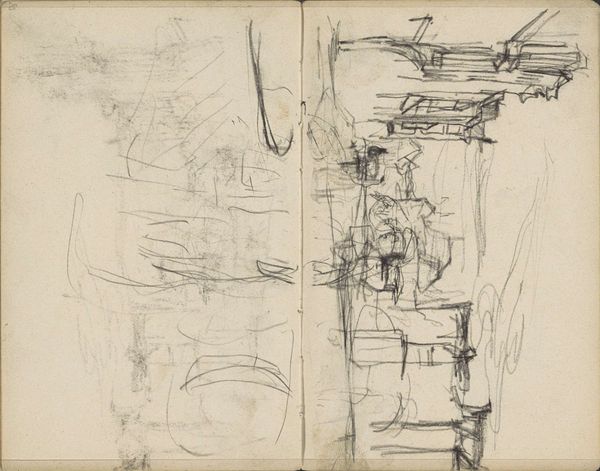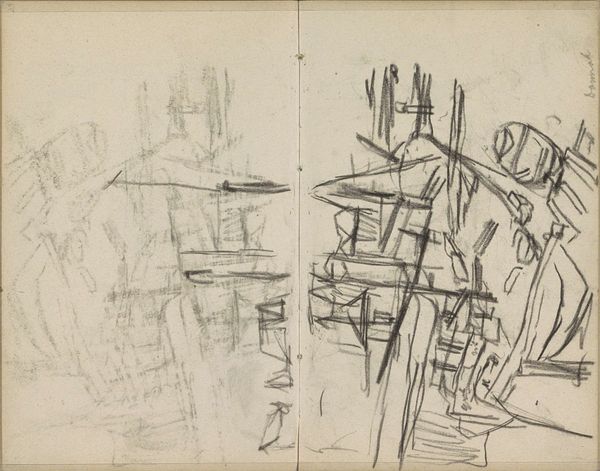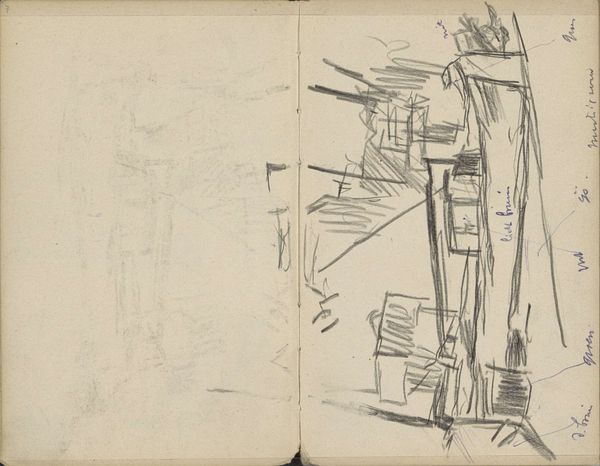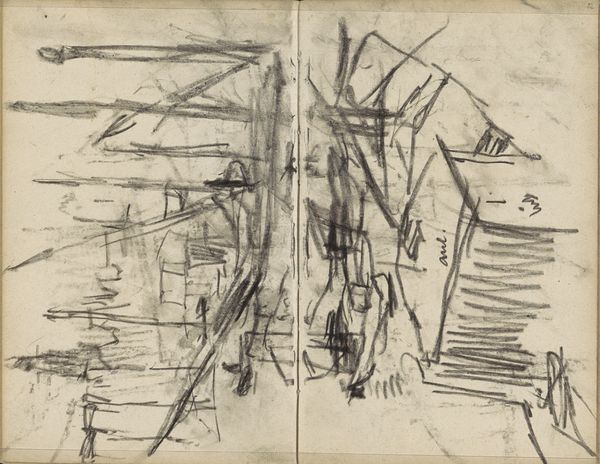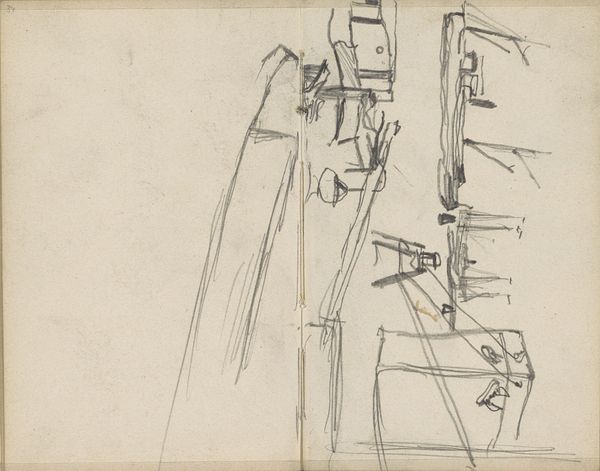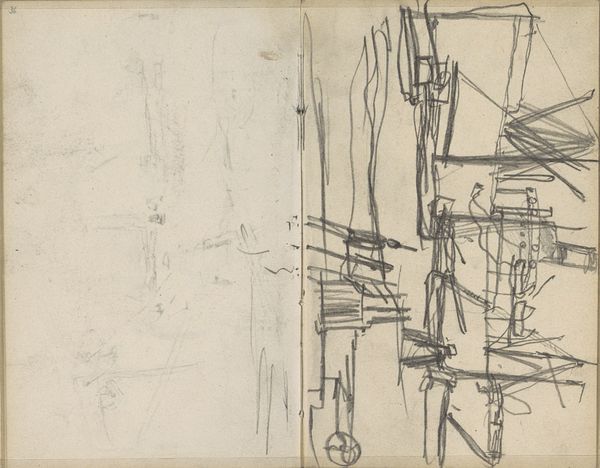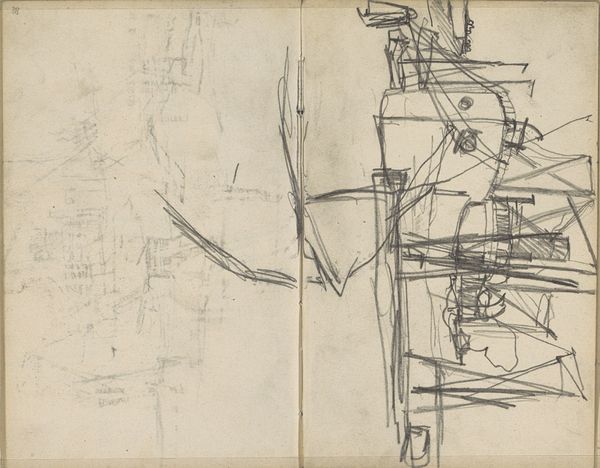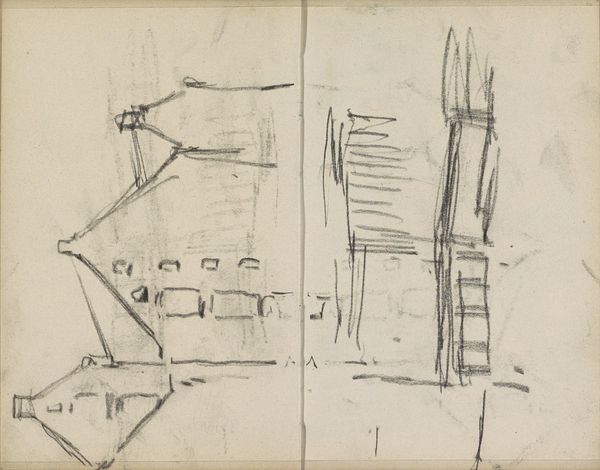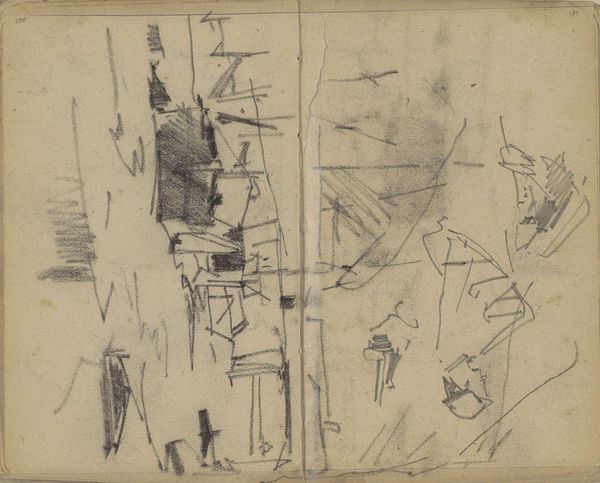
Copyright: Rijks Museum: Open Domain
Editor: So, this is George Hendrik Breitner's "Gezicht op de Sint-Bavokerk te Haarlem," a pencil and graphite drawing from 1907, housed at the Rijksmuseum. It's incredibly sparse and sketchy. It really feels like a fleeting impression captured in a moment. What do you see in this piece, beyond just the literal depiction of a church? Curator: Well, what I find particularly compelling is how this seemingly simple sketch engages with the urban experience of the early 20th century. Breitner, often associated with Amsterdam street scenes, offers here a glimpse into Haarlem. How might this drawing speak to the rapid urbanization and social changes occurring at the time, not just in the Netherlands, but across Europe? Do you notice any deliberate choices in composition that might reflect a particular viewpoint, perhaps even a critical one? Editor: I guess the unfinished quality emphasizes the speed of modern life, a feeling that things are always changing. The fact that it's a sketch, and not a finished painting, makes it feel very immediate and raw. I'm just wondering if the sketch captures how urban developments were perceived in the collective consciousness of the people during that era? Curator: Exactly! The "unfinished" quality invites us to consider the provisional nature of experience itself. The starkness of the lines might reflect the disorienting effects of modernization on society, questioning what was permanent in an evolving world. Also, take a look at the vantage point. Is there a sense of the artist standing at street level or looking down on their subjects? Could Breitner be pointing to societal inequalities? How might the location, in this sense, inform our perception? Editor: Now that you point it out, it feels as though Breitner wanted to communicate social criticism through his artwork. It is powerful to see such clear references to social commentary so evidently! Thanks for sharing your wisdom on the topic. Curator: Of course! And, consider the absence of figures, making it about an empty church in some sense. How does this work tie to today's conversations around architecture and urbanization? Editor: That's fascinating, it reframes how I see the work, shifting the attention to how physical places shape our perceptions of the community itself! I will definitely investigate the social impact of architectural spaces in greater detail going forward.
Comments
No comments
Be the first to comment and join the conversation on the ultimate creative platform.
